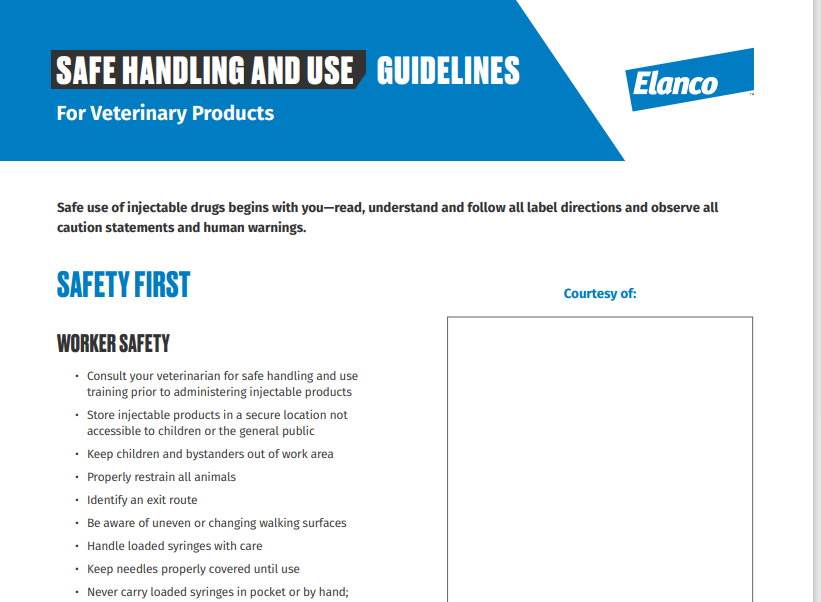Micotil (tilmicosin injection) Training Center
Welcome to the Micotil Training Center! Here you’ll find the necessary modules for course completion, which will then allow you to purchase and safely administer Micotil.
Safety Brings Better Results
The utmost caution must be taken when handling Micotil. This allows for optimal results for both you, your cattle and your operation. On this page, we will cover dosage, application and safety product information to ensure that you are fully informed before handling Micotil.
How to Become Certified
Micotil is an effective and game-changing tool to have in your tool kit against BRD. However, like any injectable, safety is the number one priority. Micotil should only be handled after the completion of the Micotil Safety Course to ensure the lowest risk possible of self-injection. Once you complete the course and complete your form submission, your name will be added to our Safe to Sell list which will allow you to purchase and administer Micotil.

If you find yourself with questions about BRD, look no further than ElancoBRD.com. Here you can educate and arm yourself against the threat it poses.

Learn more about Micotil, how it works, product benefits, usage and administration on MicotilForCattle.com.

Once you're ready, complete the online Micotil Safety Course below to receive your certification.

You did it! Once you’ve completed the online or in-person Micotil Safety Course and completed the online certification, your name will be added to an online registry that allows you to purchase and handle Micotil.
What you’ll be learning

See the below educational module for Micotil safety training.
Certification Instructions
After completing the training, download and complete the Certification Signature Page. Only physical signatures or authenticated electronic signatures will be accepted. Send your completed form to Micotil_Certification@elanco.com.
Micotil Safe Handling and Administration
SAFETY INFORMATION
In case of an emergency, remember the Three Rs:
- Reach for and apply an ice pack
- Reference the product label “Note To The Physician” and/or product insert and provide to emergency medical personnel
- Remember to contact the Emergency Medical Hotline 800-722-0987
Further Safety Information
SAFE Guidelines

Download our SAFE Guidelines to learn more about safe use of injectable drugs.
Indication
Micotil® (tilmicosin injection) is indicated for the treatment of bovine respiratory disease (BRD) associated with Mannheimia haemolytica, Pasteurella multocida and Histophilus sommi, and for the control of respiratory disease in cattle at high risk of developing BRD associated with M. haemolytica.
Important safety information
Before using this product, it is important to read the entire product insert, including the boxed human warning.
Caution: Federal law restricts this drug to use by or on the order of a licensed veterinarian. Not for human use. Injection of this drug in humans has been associated with fatalities. Keep out of reach of children. Administer only with a tube-fed safety syringe. Do not use in automatically powered syringes, single-use syringes, or other delivery devices. Exercise extreme caution to avoid accidental self-injection. In case of human injection, consult a physician immediately and apply ice or cold pack to injection site while avoiding direct contact with the skin. Avoid contact with eyes. Always use proper drug handling procedures to avoid accidental self-injection. Consult your veterinarian on the safe handling and use of all injectable products prior to administration. For use in cattle or sheep only. Inject subcutaneously. Injection of this antibiotic has been shown to be fatal in swine and non-human primates, and may be fatal in horses and goats. Do not use in lambs less than 15 kg body weight. Do not use in female dairy cattle 20 months of age or older. Use in lactating dairy cattle or sheep may cause milk residues. The following adverse reactions have been reported: in cattle: injection site swelling and inflammation, lameness, collapse, anaphylaxis/anaphylactoid reactions, decreased food and water consumption, and death; in sheep: dyspnea and death. Micotil has a pre-slaughter withdrawal time of 42 days.